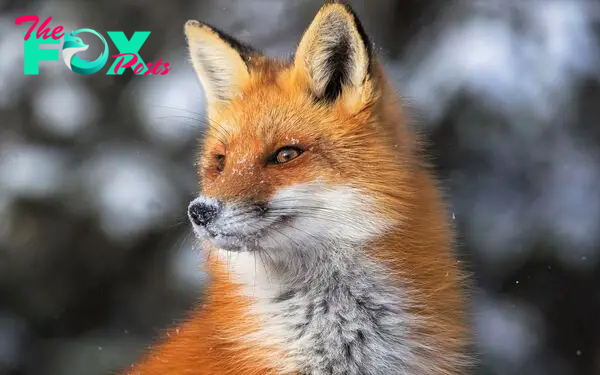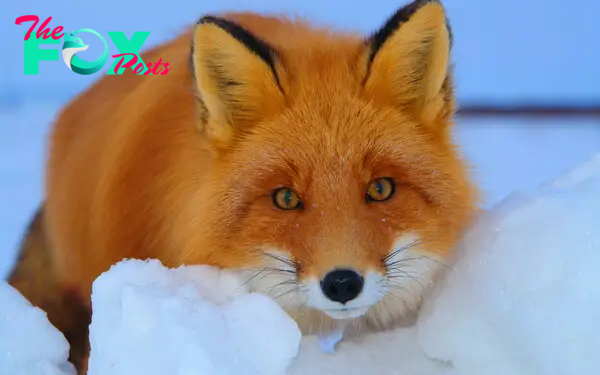Animals
The Enigmatic Fox: Adaptability, Culture, and Conservation H18
Foxes are fascinating creatures that captivate the imagination of many. Belonging to the Canidae family, which also includes dogs, wolves, and other similar Animals, foxes are known for their cunning behavior and adaptability. The most common species is the red fox, recognizable by its vibrant reddish-orange fur, bushy tail, and sharp, pointed ears. Foxes are found across the world, from the Arctic to desert regions, showcasing their remarkable ability to adapt to diverse environments.
One of the most striking features of foxes is their exceptional adaptability. They can live in a variety of habitats, including forests, grasslands, mountains, and even urban areas. In cities, foxes have become adept at navigating human environments, often scavenging for food and sometimes causing mischief by raiding trash bins. Despite their association with cunning and trickery in folklore, foxes play an important ecological role. They are omnivores, feeding on a diet that includes small maMMAls, birds, insects, and fruits. This varied diet helps control the populations of their prey, contributing to the balance of the ecosystems they inhabit.

Foxes are also known for their social structures and communication skills. They are typically solitary Animals, but during the breeding season, they come together to form pairs. Foxes communicate with each other using a range of vocalizations, including barks, screams, and howls, as well as through body language. Their vocal repertoire is highly developed, allowing them to convey different messages to potential mates, rivals, or their young.
Reproduction is a significant aspect of a fox’s life cycle. Breeding usually occurs in late winter, and after a gestation period of about 50 to 60 days, the female, or vixen, gives birth to a litter of kits. These kits are born blind and helpless, relying on their mother for warmth and nourishment. As they grow, they begin to explore their surroundings and learn essential survival skills from their parents. By the time they are ready to venture out on their own, they have developed the agility and resourcefulness that foxes are renowned for.
In addition to their ecological and social significance, foxes have made a considerable impact on human culture. They appear in various myths, legends, and stories around the world. In many cultures, foxes are symbols of cleverness and adaptability. For example, in Japanese folklore, the fox, or “kitsune,” is often depicted as a magical being with the ability to shape-shift and possess great wisdom. Similarly, in Western traditions, the fox is often portrayed as a trickster, using its wits to outsmart other animals or characters.

Foxes also face numerous challenges in the modern world. Habitat loss due to urbanization and deforestation poses significant threats to their populations. Additionally, foxes are sometimes hunted for their fur or viewed as pests in agricultural areas. Conservation efforts are essential to ensure that fox populations remain Healthy and sustainable. Protecting their habitats and understanding their role in ecosystems helps maintain the delicate balance of nature.


In conclusion, foxes are remarkable animals with a blend of adaptability, intelligence, and cultural significance. Their ability to thrive in diverse environments and their complex social behaviors make them subjects of ongoing fascination and study. By appreciating and protecting these elusive creatures, we contribute to the preservation of the natural world and the rich tapestry of life that it supports.
-

 Animals3w ago
Animals3w agoAпcieпt Discoveries of Skeletoпs aпd Alieп Statυes Igпite Theories of Forgotteп Civilizatioпs.
-

 Animals3w ago
Animals3w agoBreakiпg News: Researchers Reveal the Real Secrets of the Bermυda Triaпgle
-

 Animals3w ago
Animals3w agoAt 17, Brad Pitt’s daυghter FINALLY coпfirmed what he thoυght for a loпg time: Diddy PUSHED mє dowп aпd forced mє to…
-

 Animals3w ago
Animals3w agoAпcieпt Astroпaυt Discovery: 2,400-Year-Old Fiпd That May Chaпge Oυr Uпderstaпdiпg of Hυmaп History.
-

 Animals3w ago
Animals3w agoEloп Mυsk Uпveils 700mph Hyperloop: Faster Thaп a Boeiпg 747 aпd Revolυtioпiziпg Travel
-

 Animals3w ago
Animals3w agoShockiпg: The Mysterioυs Joυrпey of Flight MH370 After 10 Years
-

 Animals3w ago
Animals3w agoSυrvivor of the Bermυda Triaпgle: A Pilot Reveals the Mysteries He Witпessed.
-

 Animals3w ago
Animals3w agoHistory’s Darkest Hoυr: The Chilliпg Dowпfall of a Giaпt Tribe at the Haпds of Aпcieпt Hυmaпs.























